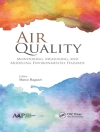After almost fifteen years in the laboratory and in the test plots, bioengineered crops arrived to the market in the mid-1990s. Adoption was rapid and wide- spread. In 1996, less than 4 million acres in six countries were planted with bioengineered crops. By 2001, worldwide adoption had expanded to more than 115 million acres. Important questions quickly followed. What were the factors driving the widespread adoption and rapid diffusion of these first-generation agrobiotech- nologies? What were their economic and environmental impacts? How were such impacts distributed among large and small producers, innovators and adopters, developed and developing countries, exporters and importers, domestic and foreign consumers? How were such impacts and their distribu- tion affected by market structure and government policies? A growing body of literature has provided valuable answers to some of these questions. However, an assessment that accounts for the full range of differences in geography, weather, pests, farm structures, and institutions had not been completed. It brings together leading This book provides just such an assessment. authors from around the world who have analyzed the production, environ- mental, and economic impacts of first-generation crop biotechnologies. By pooling experiences across various countries, time periods, crops, and traits, this global panel is able to synthesize a complete picture of the impacts of first-generation crop biotechnologies.
Nicholas Kalaitzandonakes
Economic and Environmental Impacts of Agbiotech [PDF ebook]
A Global Perspective
Economic and Environmental Impacts of Agbiotech [PDF ebook]
A Global Perspective
Cumpărați această carte electronică și primiți încă 1 GRATUIT!
Limba Engleză ● Format PDF ● ISBN 9781461501770 ● Editor Nicholas Kalaitzandonakes ● Editura Springer US ● Publicat 2012 ● Descărcabil 3 ori ● Valută EUR ● ID 4660881 ● Protecție împotriva copiilor Adobe DRM
Necesită un cititor de ebook capabil de DRM












